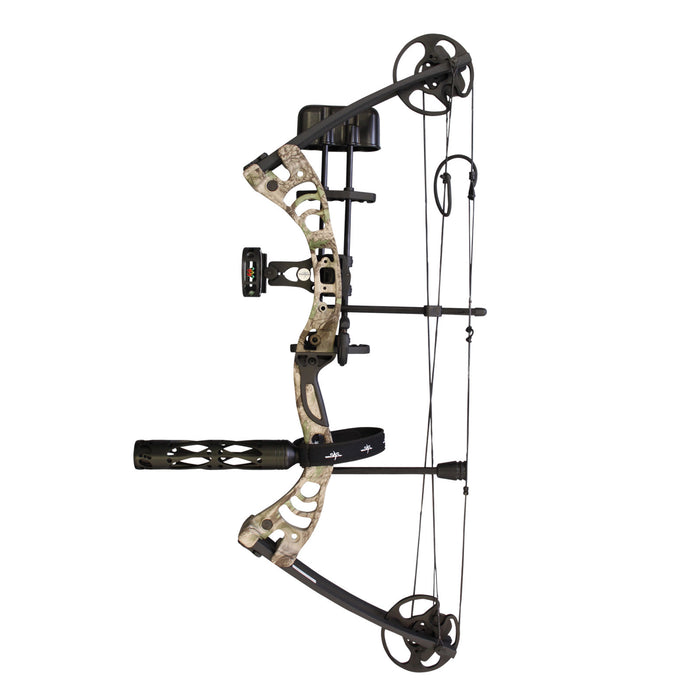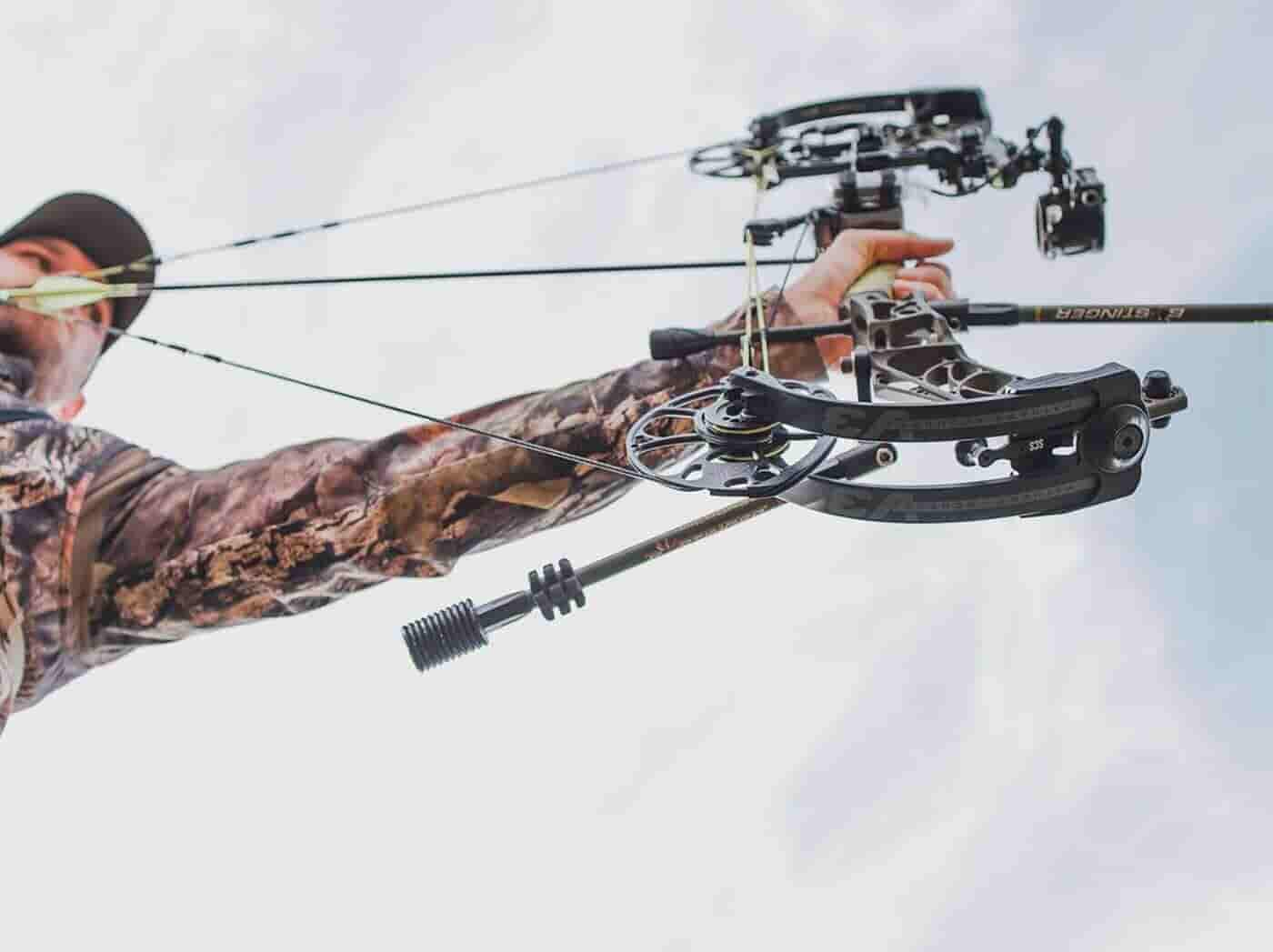Fine-Tune Your Goal: The Scientific Research Behind Compound Bow Stabilizers
Fine-Tune Your Goal: The Scientific Research Behind Compound Bow Stabilizers
Blog Article
Optimizing Your Archery Efficiency With the Right Compound Bow Stabilizer: an Extensive Introduction
In the world of archery, consistency and precision are paramount to achieving optimum efficiency. One critical yet often-overlooked part in boosting precision is the compound bow stabilizer. This simple device plays a significant duty in steadying your goal, minimizing bow torque, and taking in vibrations. However, the performance of a stabilizer depends upon different elements, including weight, layout, and placement. By understanding the subtleties of selecting and maximizing a compound bow stabilizer, archers can fine-tune their devices to elevate their capturing experience to new degrees of efficiency and control.
Value of Bow Stabilizers in Archery

Furthermore, bow stabilizers aid in stabilizing the weight distribution of the bow, which can boost the archer's stability while firing and intending. By adding weight to the front of the bow, stabilizers can reduce the quantity of torque experienced upon release, resulting in a smoother and a lot more regulated shot - compound bow stabilizer. This weight circulation also aids in holding the bow consistent for a longer period, enabling the archer to aim more properly
Sorts Of Compound Bow Stabilizers
When taking into consideration the numerous kinds of compound bow stabilizers readily available, it is important to understand their distinct attributes and features to determine the most suitable alternative for making the most of archery performance. The most usual types of compound bow stabilizers consist of sidebar stabilizers, front stabilizers, and back stabilizers. Back stabilizers, additionally called rear stabilizers, are mounted to the back of the bow and aid in counteracting the weight of other accessories, resulting in boosted security and constant intending.
Variables to Think About When Choosing
In assessing substance bow stabilizers, comprehending the distinctive functions and features of each type is critical for making a notified choice on the most ideal alternative to improve archery performance. When selecting a stabilizer, one must think about the weight of the stabilizer itself. While a much heavier stabilizer can offer even more stability by minimizing the bow's activity, it may also cause tiredness throughout long shooting sessions. Equilibrium is one more vital variable to ponder. The stabilizer's length and style significantly impact the bow's equilibrium, affecting the shooter's capability to hold steady objective. In addition, the material of the stabilizer can affect its performance. Carbon fiber stabilizers are lightweight and absorb vibrations well, enhancing accuracy. Additionally, the number and adjustability of dampeners on the stabilizer can adjust its efficiency by reducing sound and shock upon launch. By thoroughly examining these variables, archers can pick a substance bow stabilizer that aligns with their shooting style and maximizes their overall performance on the archery variety.
Installation and Change Tips
For optimum performance and accuracy in archery, understanding the setup and adjustment of your bow stabilizer is crucial. Appropriate installation begins with connecting the stabilizer to click to read the bow's riser, ensuring it is strongly secured.
When readjusting the stabilizer, start with small step-by-step modifications as opposed to drastic changes. This allows you to assess the influence of each adjustment accurately. Focus on just how the bow responds to changes in stabilizer setups and make adjustments appropriately. Remember that the goal is to find a configuration that minimizes hand torque, minimizes resonance, and enhances precision. Consistently check the stabilizer's rigidity and total condition to guarantee it remains to operate optimally. By grasping the setup and change procedure, you can maximize your archery efficiency and boost your capturing experience.
Upkeep and Treatment Standards

When not in use,It is likewise vital to keep your bow with the stabilizer in a secure and secure area. compound bow stabilizer. Stay clear of leaving it in severe temperatures or exposed to direct sunshine for prolonged periods, as this could create damages to the stabilizer. discover this Regularly check the stabilizer's alignment to guarantee it is still appropriately positioned on your bow. Following these upkeep and treatment guidelines will aid you obtain the most out of your bow stabilizer and enhance your total archery performance.
Verdict
Finally, choosing the ideal compound bow stabilizer is crucial for making best use of archery performance. Recognizing the value, types, aspects to consider, installment and adjustment ideas, as well as upkeep and treatment standards can significantly influence one's accuracy and uniformity in capturing. By choosing a stabilizer that matches individual requirements and choices, archers can enhance their general efficiency and accomplish better outcomes on the array or in competition.
Bow stabilizers play a critical role in improving an archer's precision and consistency by minimizing resonances and stabilizing the bow during the launch of an arrowhead - compound bow stabilizer.Additionally, bow stabilizers assist in stabilizing the weight circulation of the bow, which can improve the archer's stability while intending and firing. The most common types of substance bow stabilizers consist of sidebar stabilizers, front stabilizers, and back stabilizers. Back stabilizers, also called rear stabilizers, are installed to the back of the bow and help in counteracting the weight of other accessories, resulting in enhanced security and constant intending. When choosing a stabilizer, one should think about the weight of the stabilizer itself
Report this page